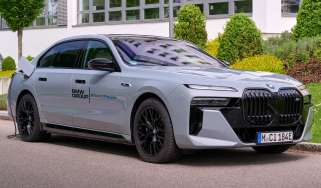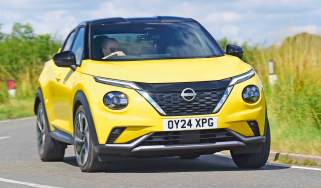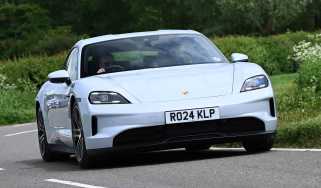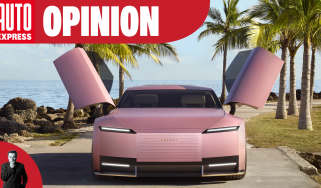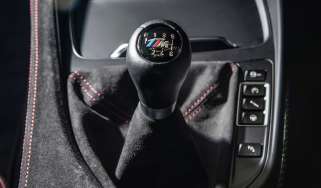Electric car batteries: all about EV battery tech present and future
Batteries are the most complex part of an electric car, but how do they work?
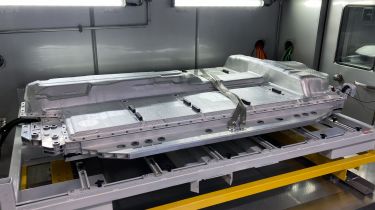
EV technology has been touted as the future, swapping combustion engines and fuel tanks for electric motors and batteries.
Yet despite electric cars already making their way into the mainstream, the tech that powers them remains something of a mystery, with manufacturers offering very little explanation as to exactly how electricity from a plug socket is stored in your car and subsequently consumed and transformed into kinetic energy via the electric motors.
Porsche invited us to its battery development centre in Weissach to speak to its experts so we can cut through the fog and demystify EV technology.
How do EV batteries work?
Most electric car batteries are of the lithium ion variety, which is essentially a much larger version of the one found in your smartphone. A battery pack comprises several different modules, which contain a variety of cells; the Porsche Taycan’s 93kWh Performance Battery Plus, for example, boasts 33 modules, each accommodating 12 cells.
Each cell has a positive ‘cathode’ and a negative ‘anode’; the former is typically made from either Lithium Nickel Manganese Cobalt Oxide (NMC) or Lithium Iron Phosphate (LFP), while the latter is usually made from graphite. These are split by a non-conductive separator, with a liquid ‘electrolyte’ solution surrounding it all, enabling lithium ions to be transferred between the positive and negative ends.
When the car is charging, lithium ions will flow through the cabling and, in the case of pouch-style batteries such as the ones used by Porsche, inside via metallic tabs. These are funneled into the anode and then, thanks to the presence of electrolytes, through the separator and into the cathode, in which they are stored. When the car is discharging energy, the opposite will occur, with lithium ions travelling from the cathode to the anode and then through cabling onto the electric motor.
LFP vs NMC
As mentioned, there are two main types of lithium ion batteries – NMC and LFP – both with distinct advantages and disadvantages. The former is by far the most popular chemistry adopted for EV batteries, offering superior energy density, meaning more lithium ions can be stored per cell, in turn leading to less weight per kilowatt-hour of storage – ideal for a sports car such as the aforementioned Taycan.
Unfortunately, NMC battery technology has rightly come under fire due to the unsustainability of mining precious metals such as cobalt, while the lifespan is typically shorter than that of an LFP alternative.
LFP batteries, on the other hand, may not have the same energy density as NMC units, but they are considered much more environmentally friendly thanks to their lack of precious metals. Iron Phosphate cells are cheaper to produce than their NMC brethren, making them an ideal candidate for budget EVs.
How long do electric car batteries last?
How long an electric car battery will last ultimately depends on the way it’s used; those operating constantly at a high temperature, driven for longer periods and charging to 100 per cent more frequently will ultimately hold onto less of their maximum capacity as time goes on.
Porsche, for example, offers its cars with an eight-year, 100,000-mile battery warranty, however the general view is that most batteries will go on for much longer. Porsche’s battery tech team told us their cars’ batteries could go on for as long as 15 years and over 180,000 miles before dipping below 70 per cent capacity. Of course, this is just an estimate, because battery technology has not been on the market long enough for the calculation to reference real-world examples, although the packs are tested in a variety of temperatures and environments to ensure their reliability.
It’s also worth pointing out that misuse of a battery pack by rapidly and frequently overheating and cooling it could lead to what’s known as ‘sudden death’. This rather morbid-sounding phenomenon essentially results in a sudden loss of capacity, either through short-circuiting or lithium plating (a process in which the ions, unable to properly enter either the cathode or anode, solidify within the electrolyte itself).
Are EV batteries safe?
One of the main concerns surrounding EV batteries is that of thermal runaway, which can lead to huge fires that may be difficult to control. Yet while there are some stories of EVs catching fire, the issue may be somewhat exaggerated.
Porsche, like other manufacturers, incorporates failsafes into its systems, with accelerometers and sensors that will immediately discharge high-voltage components (not the battery itself) whenever it detects an impact. In the new Porsche Macan Electric, these HV parts are also positioned far and away from high-load impact areas, with the body itself designed to redistribute forces and minimise stress on the battery pack.
However, it’s worth pointing out that while EVs are built to the same safety standards as internal-combustion cars, fires generated by the battery can still occur and are typically ferocious and difficult to contain.
Porsche designs its EV batteries in such a way that thermal runaway is contained for long enough that emergency services can arrive in time to put a blaze out if one occurs. However, fire departments still require special training because electrical fires require more water than one caused by an ICE car and generate several toxic gases.
Environmental impact of EV batteries
The whole concept of electric cars pivots on the concept of sustainability, so it’d be no use if building electric-car batteries was more environmentally detrimental than producing an ICE equivalent and, on the face of it, things don’t look positive for EVs.
Figures clearly show that building an EV battery emits far more carbon dioxide than making an ICE car, with the batteries specifically relying on rare earth minerals that are not only limited in quantities, but also polluting to extract.
However, a 2023 study by the US Department of Energy found that, on average, after two years or 19,500 miles, an EV will break even in terms of CO2 emissions with an equivalent ICE car, thus being considered more environmentally friendly thereafter.
Things are expected to improve once factories adopt more green energy, and recycled materials start to make their way into EV batteries, reducing the need for polluting large-scale mining. However, the most economically friendly choice for now remains to choose a used EV, rather than buy a new one and thus require the manufacture of a new battery pack.
EV battery recycling
In an effort to create a more circular economy and rely less on the likes of Russia and China, EU ‘Rules of Origin’ regulations require that, from 2026, manufacturers incorporate a proportion of recycled content in their EV batteries, rising year-on-year to 16 per cent for cobalt, 85 per cent for lead and six per cent for lithium and nickel by 2031.
Such will be made possible with pilot schemes such as the one run by Porsche. Using discarded EV batteries from test cars, teams are working to refine the matter extracted from the used cells into materials that should offer like-for-like performance with the raw ones mined from the earth.
Of course, this remains a pilot scheme for now – Porsche expects full production to commence in 2035 – with recycled materials being used in EV batteries likely to come from other sources throughout the first few years of the EU’s RoO scheme. Nevertheless, it’s proof that EVs can exist as part of a circular economy, with huge investment meaning the technology and the means to recycle batteries will advance rapidly over time.
Future of EV batteries
EV battery tech has evolved hugely in the last decade, with improved reliability and range figures of well over 400 miles now possible. Yet, that’s not to say that we’ve reached the peak of what’s possible – electric-car batteries are, relatively, still in their infant form.
For example, while the original Nissan Leaf came with a dinky 24kWh battery pack, this size can now be found in the likes of plug-in hybrids, with the top EVs now getting capacities well in excess of 100kWh.
When asked whether Porsche expects battery sizes and ranges to continue growing exponentially, Dr. Benjamin Passenberg, the company’s Director of Battery Cells, estimated that there will eventually be a plateau in terms of range figures at around 500 miles in 2030.
Such a levelling-off is expected to coincide with continued improvement in the public charging network, with the possibility of battery sizes actually decreasing as chargepoints become faster and easier to locate.
The likes of BMW and Toyota are also testing new solid-state battery technology as a replacement for lithium ion chemistry. This will provide a much greater energy density and capacity than lithium ion equivalents, while they also suffer much less from degradation over time and have a much lower fire risk.
Such technology is still in development, with Toyota saying it doesn’t expect its solid-state batteries to make production before 2027 – although it's worth pointing out that over the past 15-or-so years the Japanese firm has been working on them, this date has continually slipped further and further into the future.
Want the latest car news in your inbox? Sign up to the free Auto Express email newsletter...
Find a car with the experts






